Last weekend we went on a fungi ID walk, organised by SWOG members Rod and Heather. It took place in their wood, led by Martin Allison, who also happens to be an area manager for the RSPB!
The weather had been dry, so we did not have high hopes, but in the end we found a wide range of fungi. Because of the dry weather, their appearance was sometimes different from normal, which is useful to see. What follows are pictures of the fungi along with their names. I've gone for the common English name where I know it, Latin in one or two cases, and generic names in cases where I don't know which precise species it is.
Let's start with one everyone should recognise, Fly Agaric, well known for being poisonous and hallucinogenic! These are usually found under birch trees, and Rod and Heather's wood was full of them.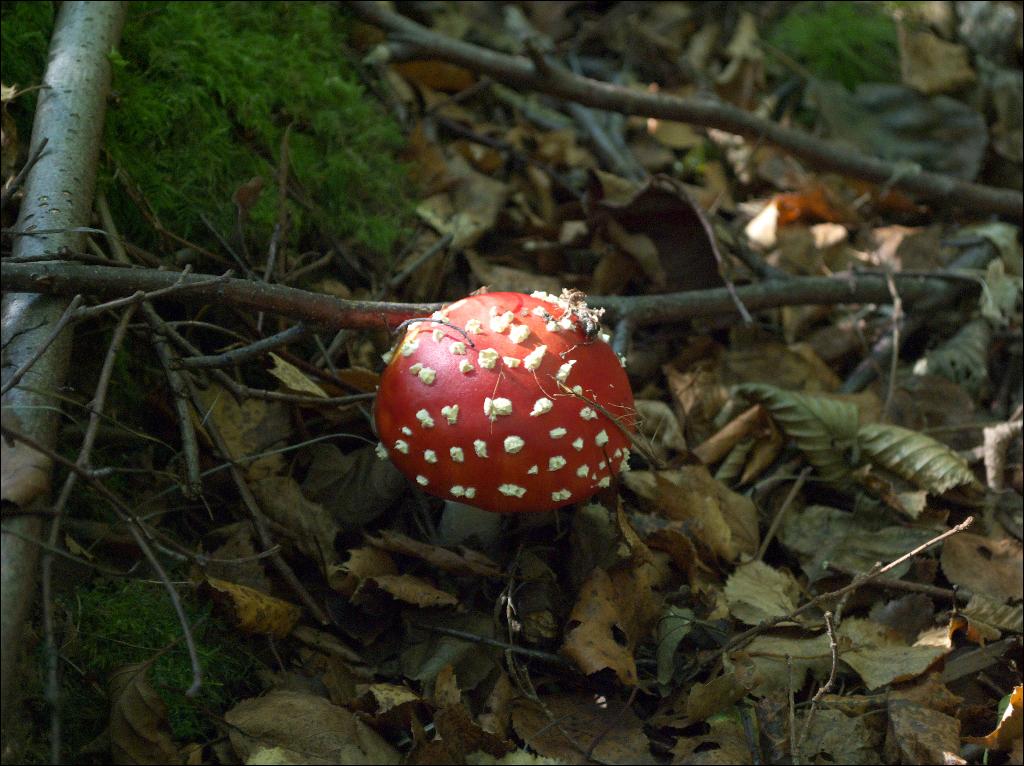

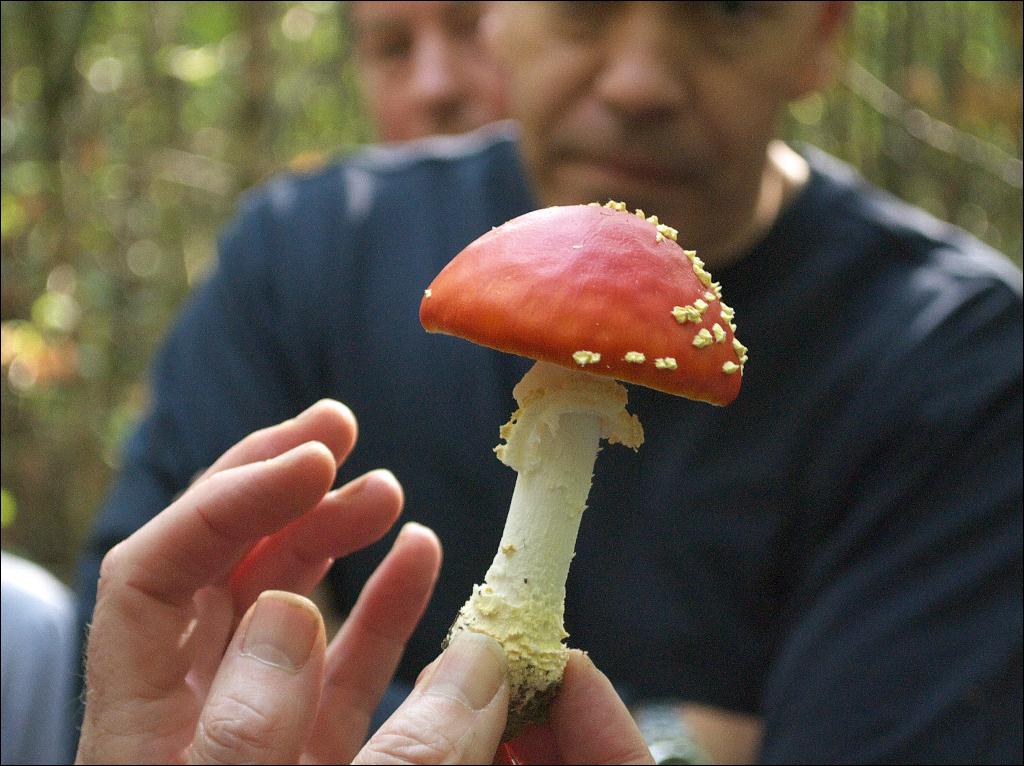
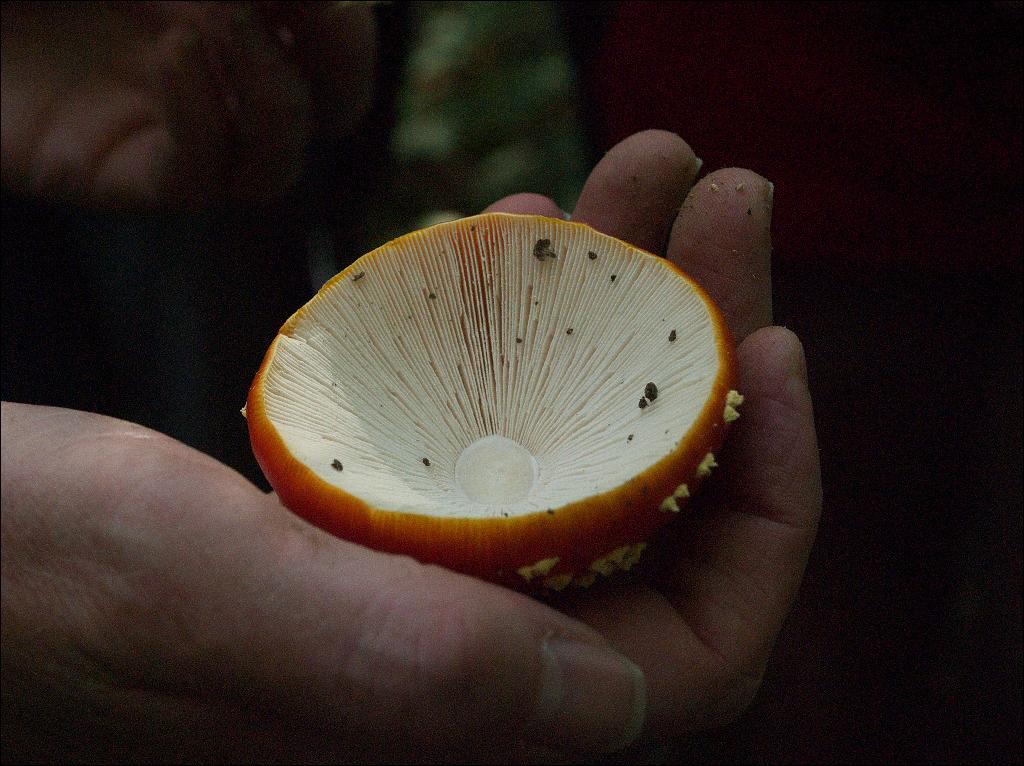 Another one you find under birch is the Brown Birch Bolete. Martin cut a section through this one so we could see the internal structure:
Another one you find under birch is the Brown Birch Bolete. Martin cut a section through this one so we could see the internal structure: Another widely scattered fungi was the Common Earthball:
Another widely scattered fungi was the Common Earthball: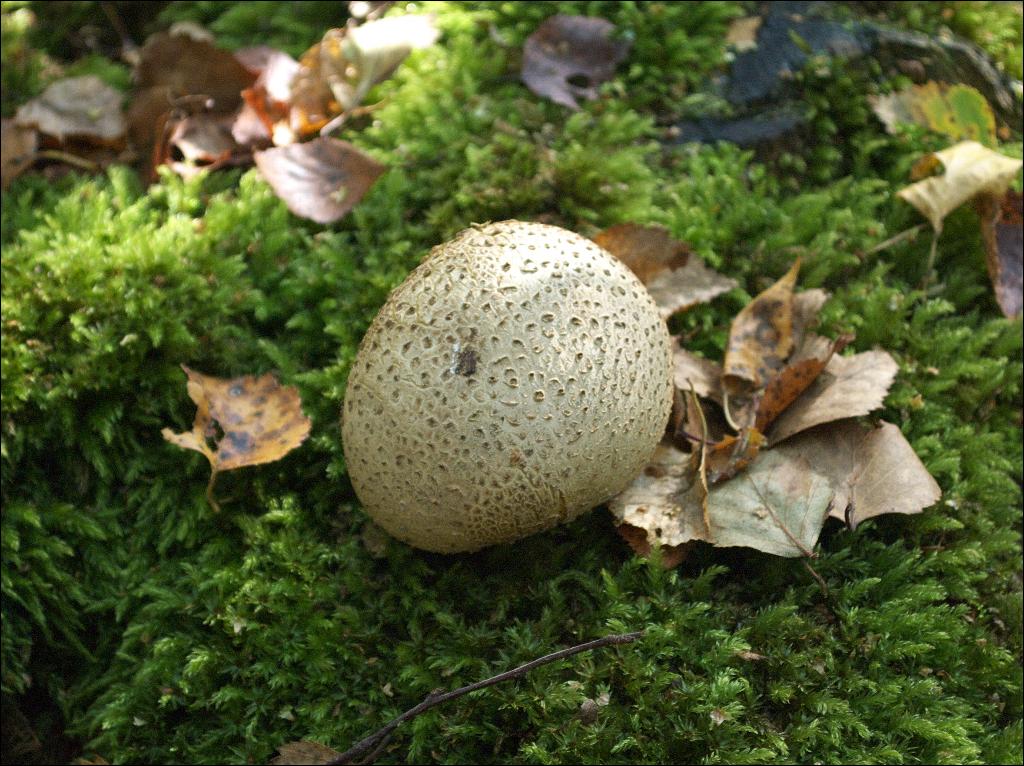
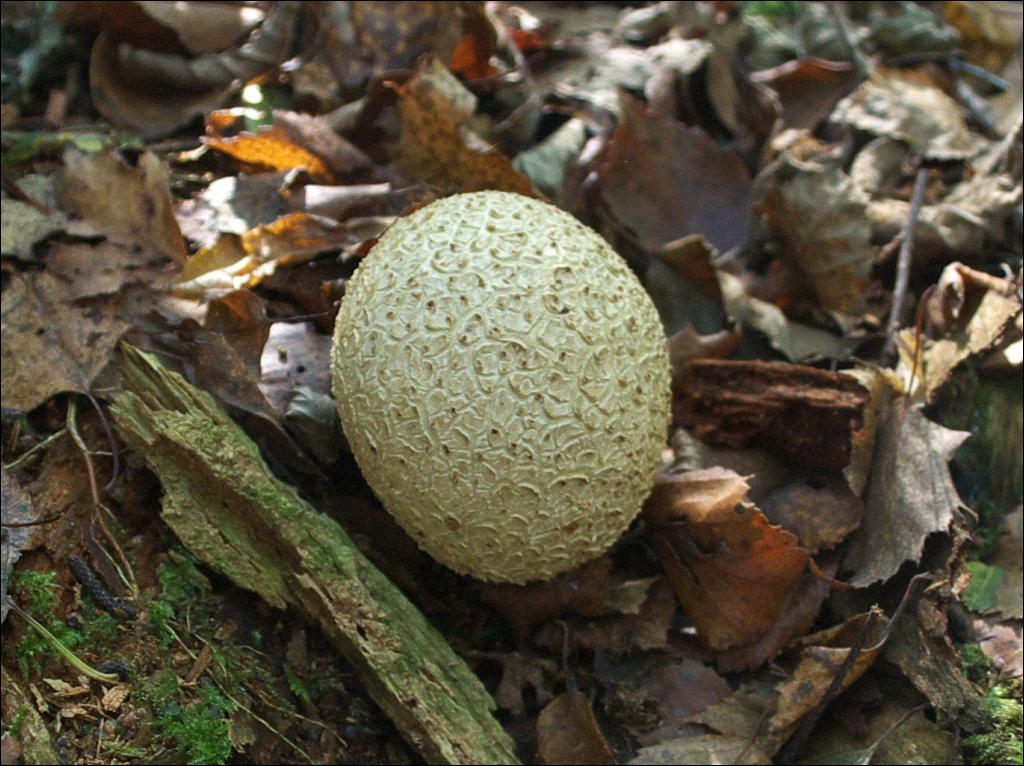
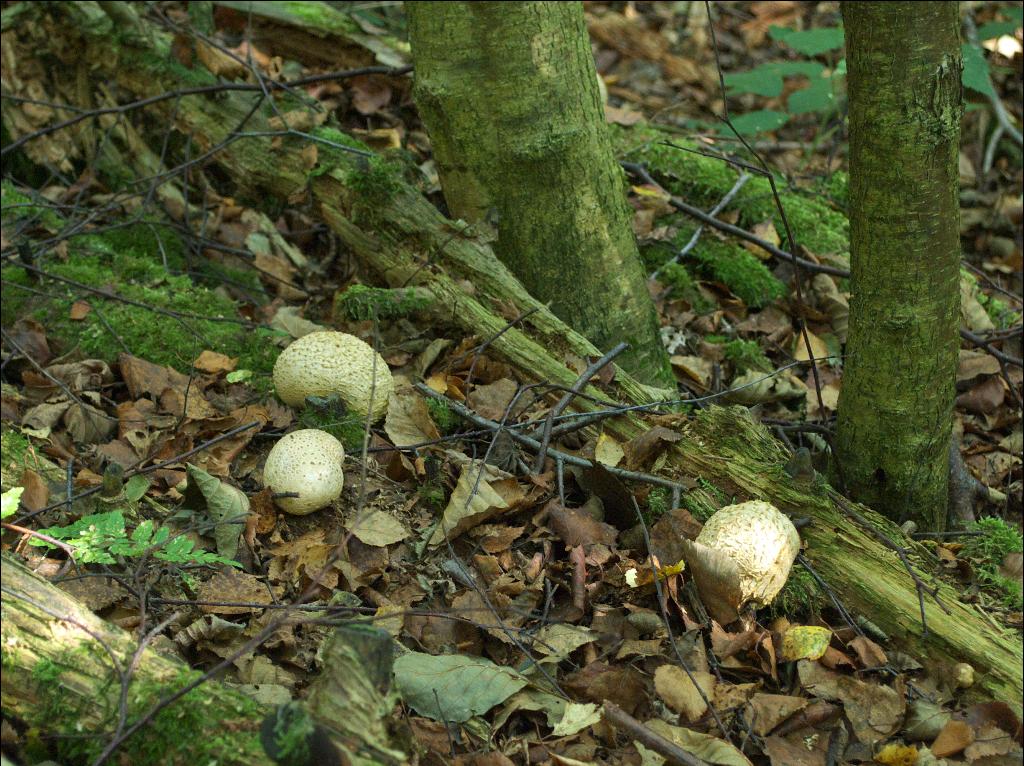 Martin found a young one and cut it open for us:
Martin found a young one and cut it open for us: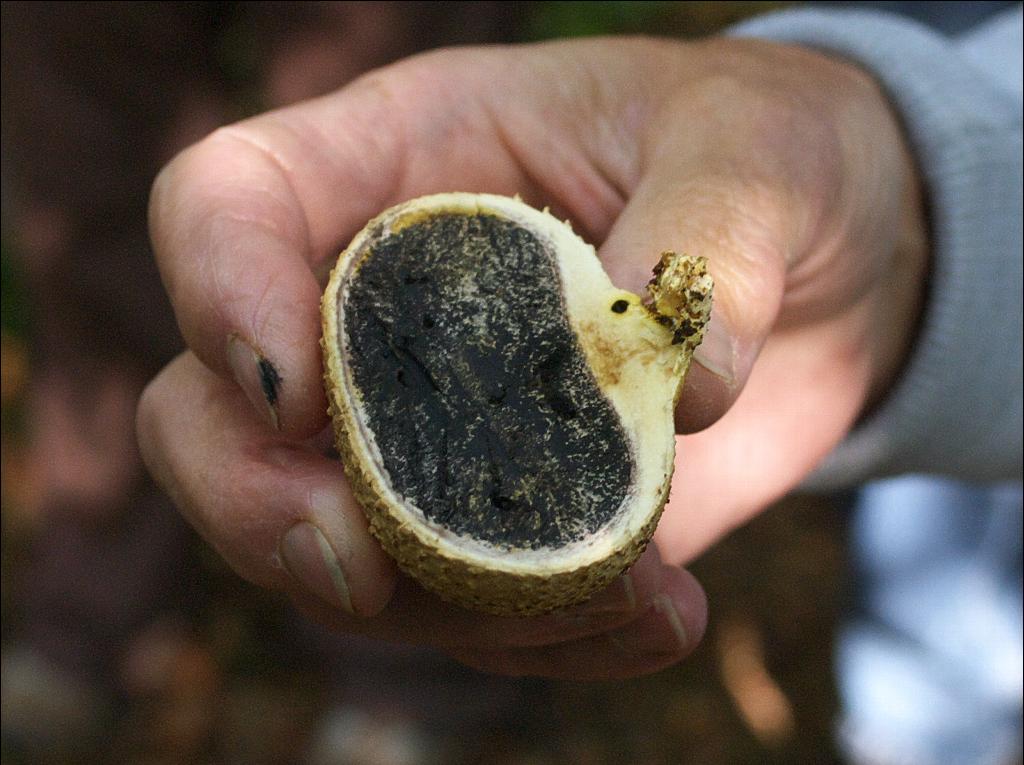 It has quite a strong smell - but don't sniff a mature one, as the spores can be an irritant. The fungi itself is poisonous if eaten.
It has quite a strong smell - but don't sniff a mature one, as the spores can be an irritant. The fungi itself is poisonous if eaten. One further fungi that is very common in woodland in the UK is Turkey Tail, growing on tree stumps:
One further fungi that is very common in woodland in the UK is Turkey Tail, growing on tree stumps: Also growing on a tree stump was Oak Mazegill:
Also growing on a tree stump was Oak Mazegill: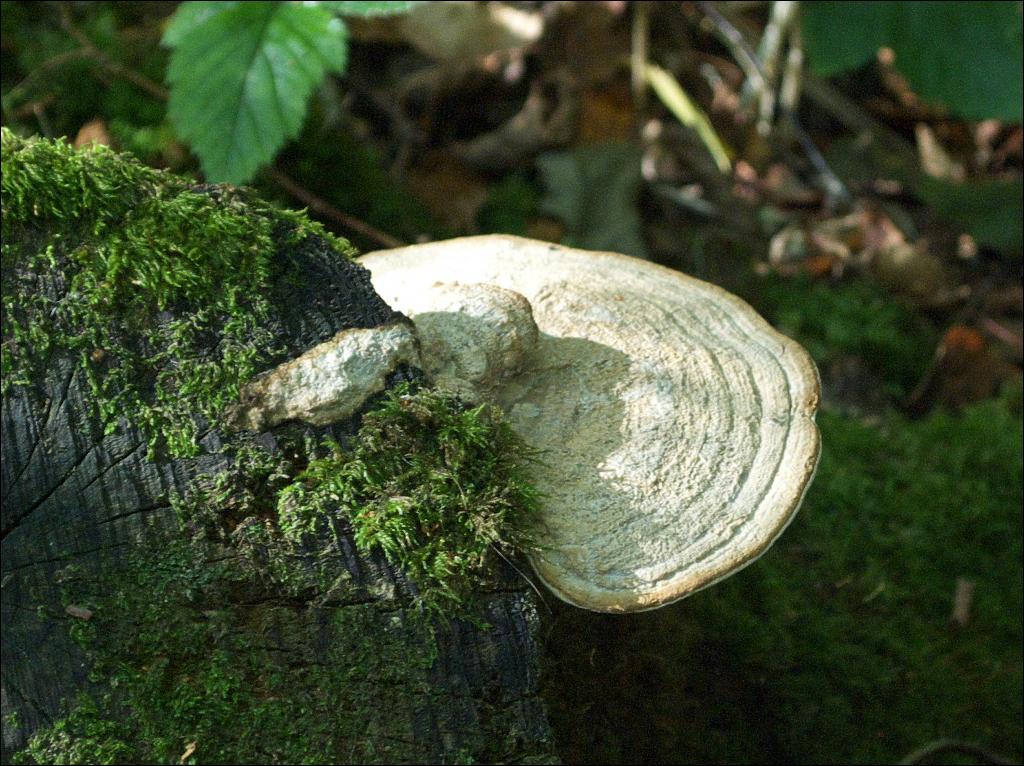
 the reason for its name becomes apparent when you see the gills:
the reason for its name becomes apparent when you see the gills: Growing further up some Birch trees was the Birch Polypore, another common woodland fungi. This is also known as Razor-strop, as when dry its tough surface can be used to hone a razor blade.
Growing further up some Birch trees was the Birch Polypore, another common woodland fungi. This is also known as Razor-strop, as when dry its tough surface can be used to hone a razor blade.
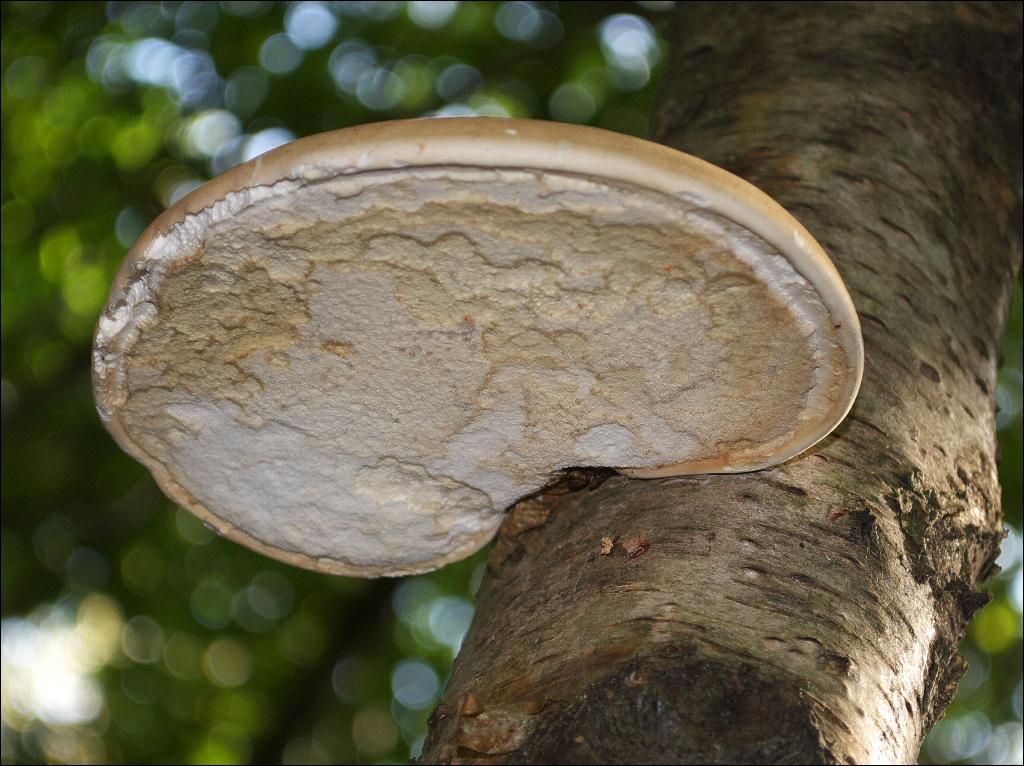 Another large fungi we saw was a Milkcap:
Another large fungi we saw was a Milkcap: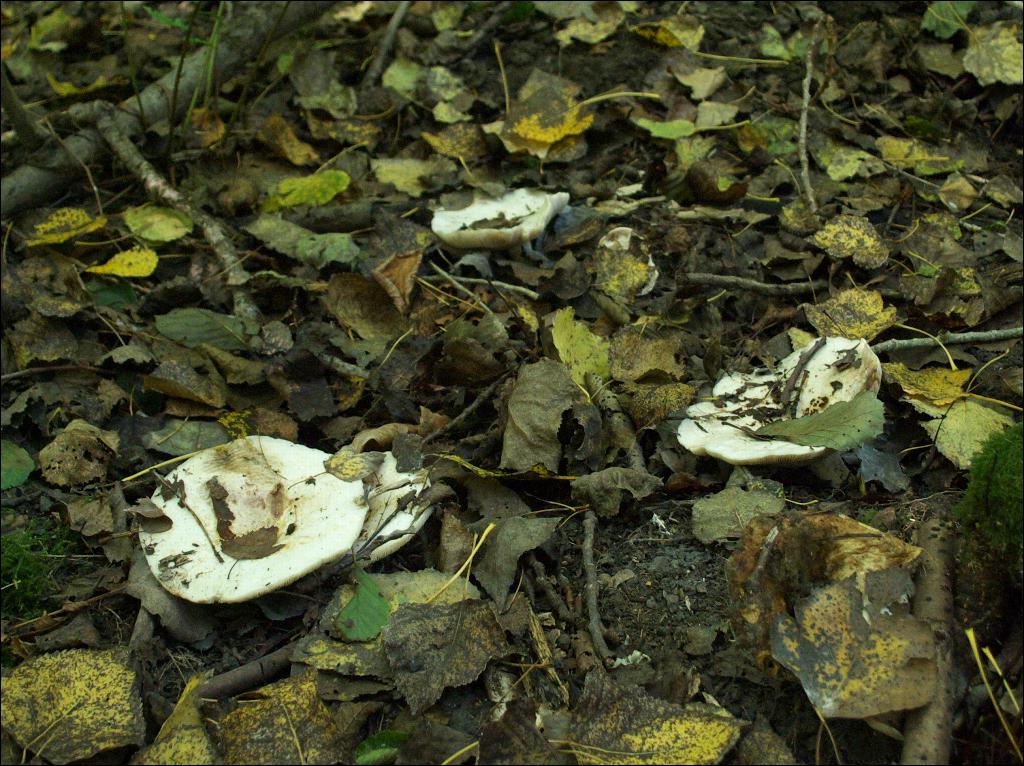 It gets its name from the milky fluid that appears when the gills are broken:
It gets its name from the milky fluid that appears when the gills are broken: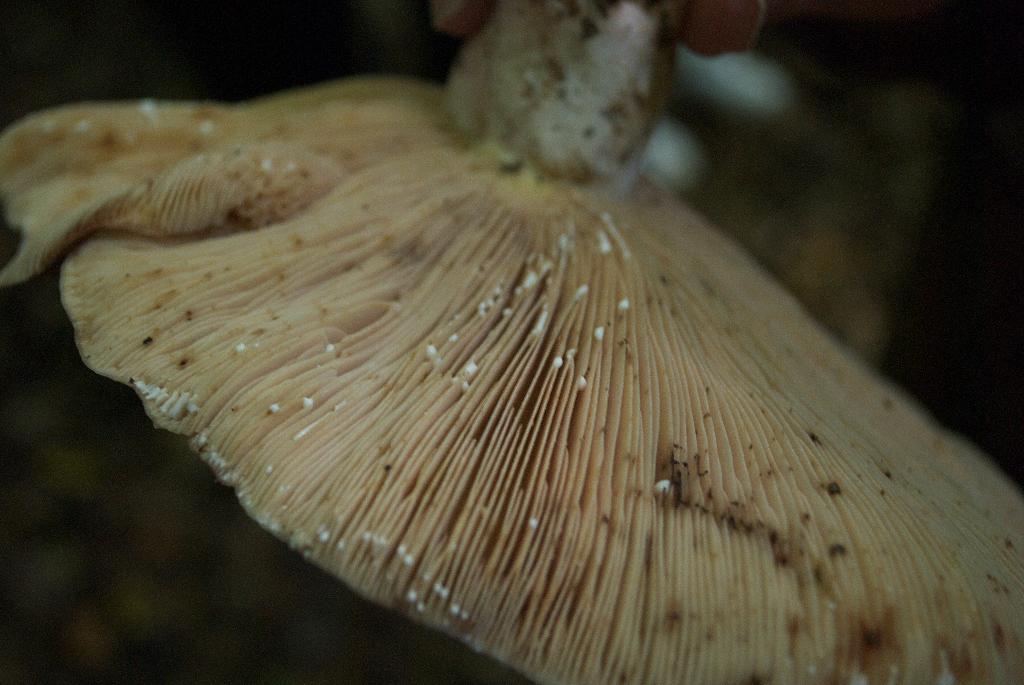

 Not sure which milkcap that is, but the following one is a Birch Milkcap:
Not sure which milkcap that is, but the following one is a Birch Milkcap: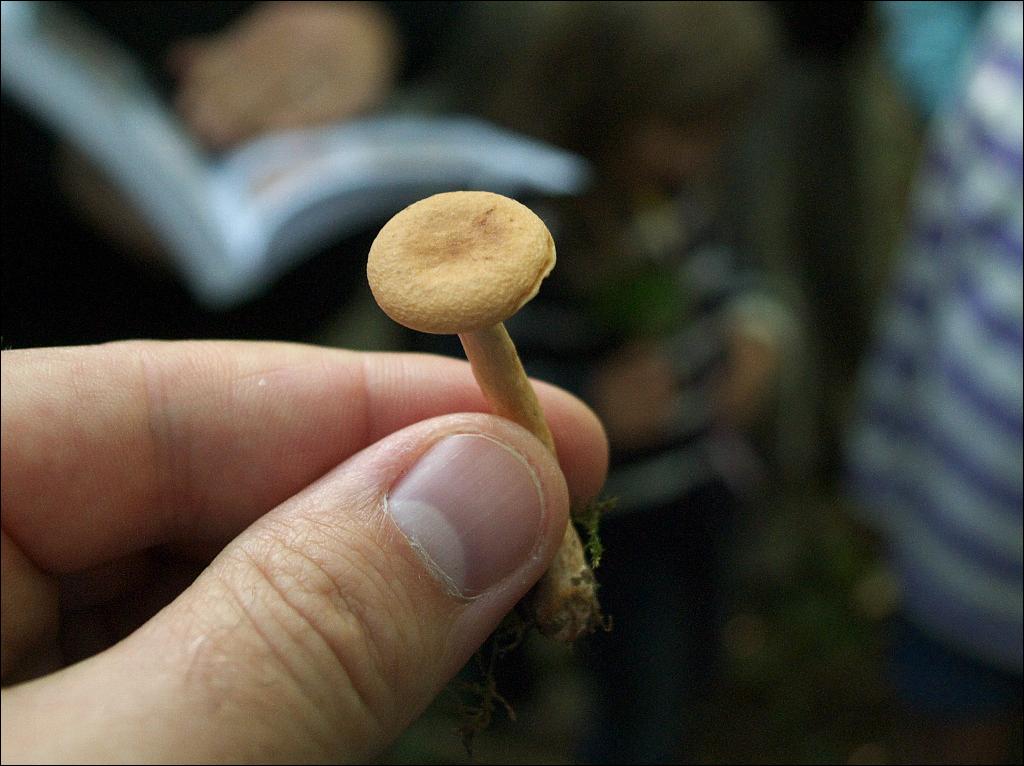
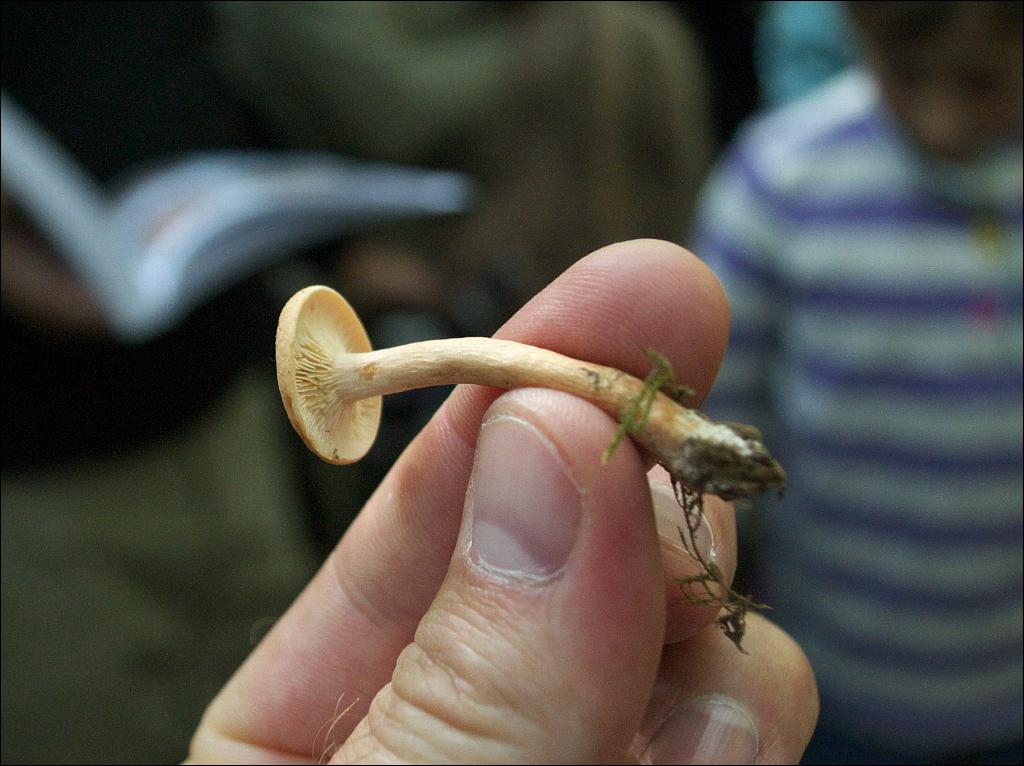 Here's a common one: the Stinkhorn. This is a young one though, at the "egg" stage:
Here's a common one: the Stinkhorn. This is a young one though, at the "egg" stage: Once again, Martin cut it open so we could see the structure:
Once again, Martin cut it open so we could see the structure: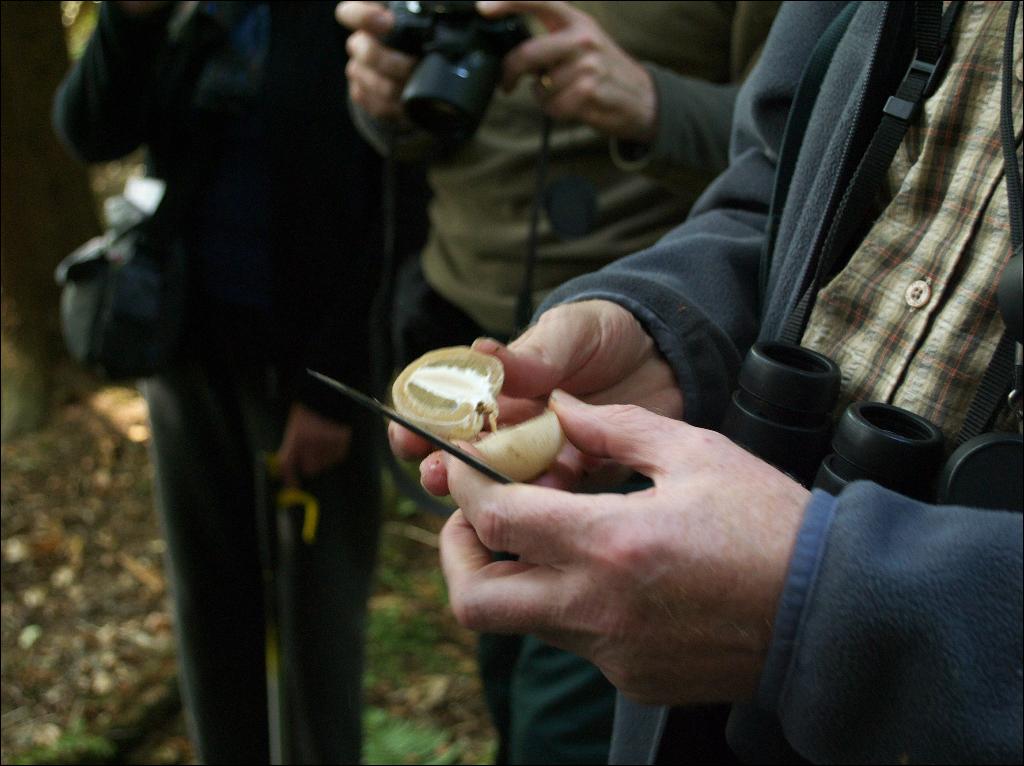
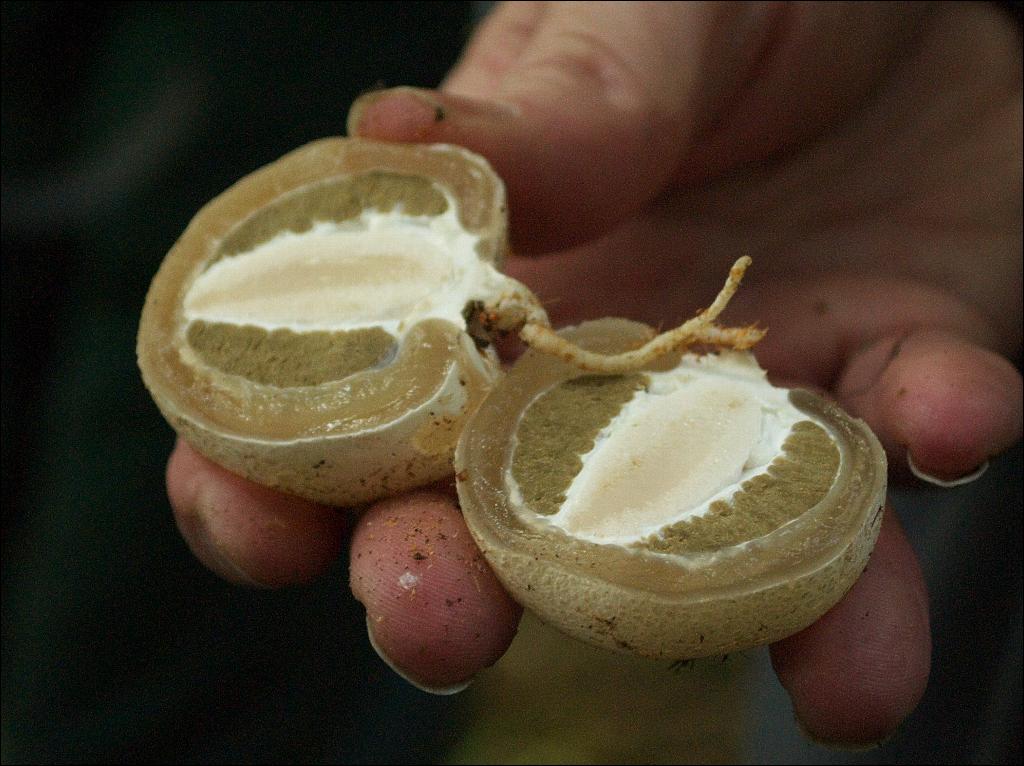
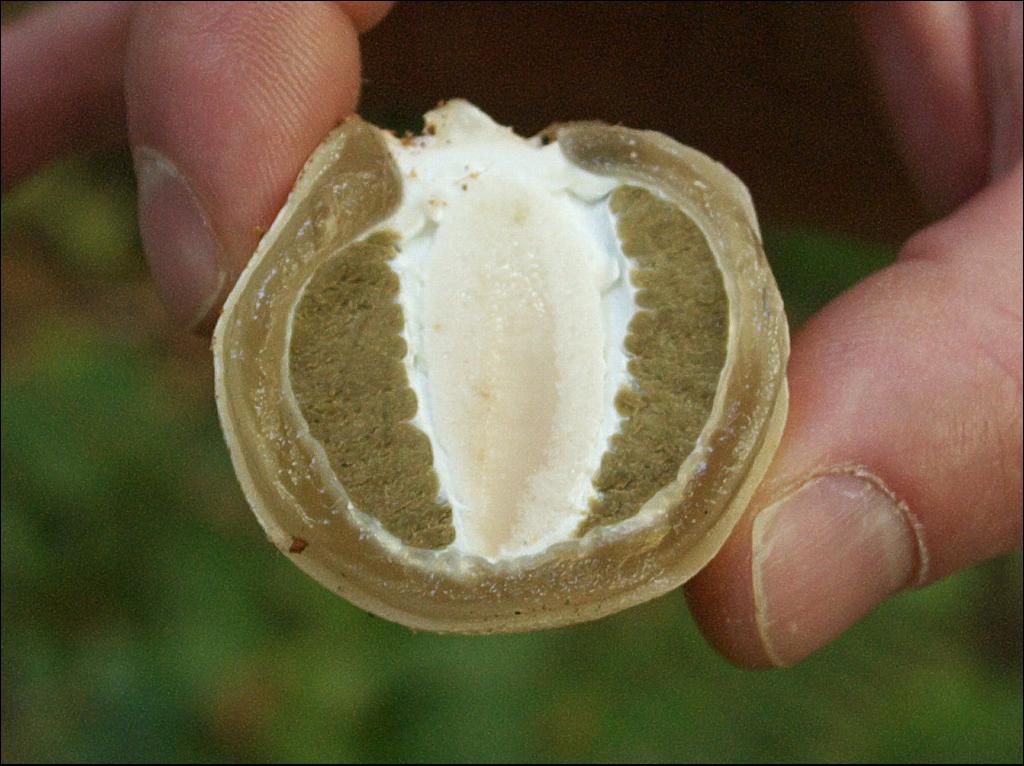 Fortunately they don't smell at this stage!
Fortunately they don't smell at this stage!
Nearby were some Inkcaps, and this group is particularly useful to illustrate the variability in appearance of a single species of fungi:
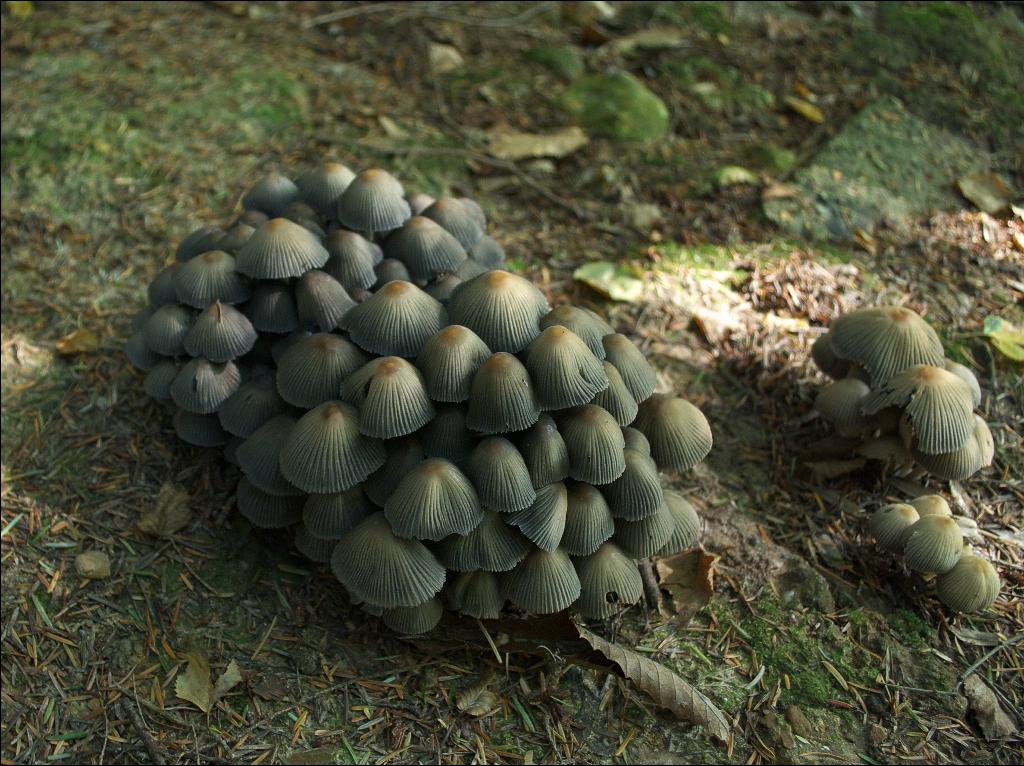

 Also growing in clusters was the Mycena Inclinata (there are loads of common names for this one, so I've used the Latin)...
Also growing in clusters was the Mycena Inclinata (there are loads of common names for this one, so I've used the Latin)...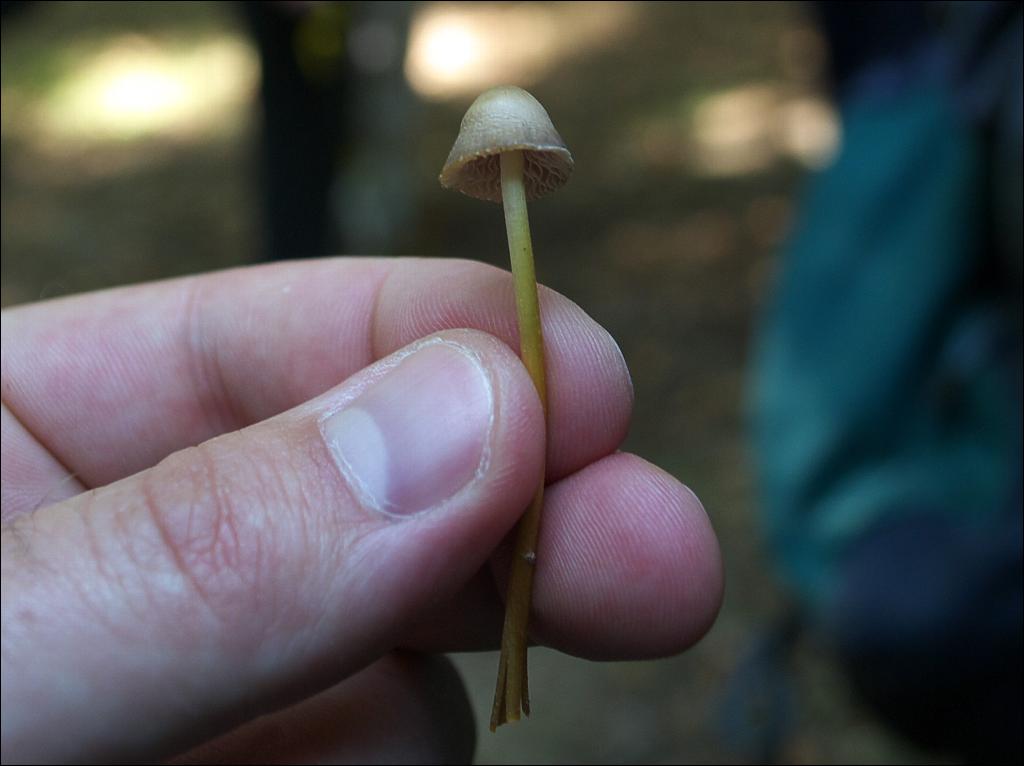
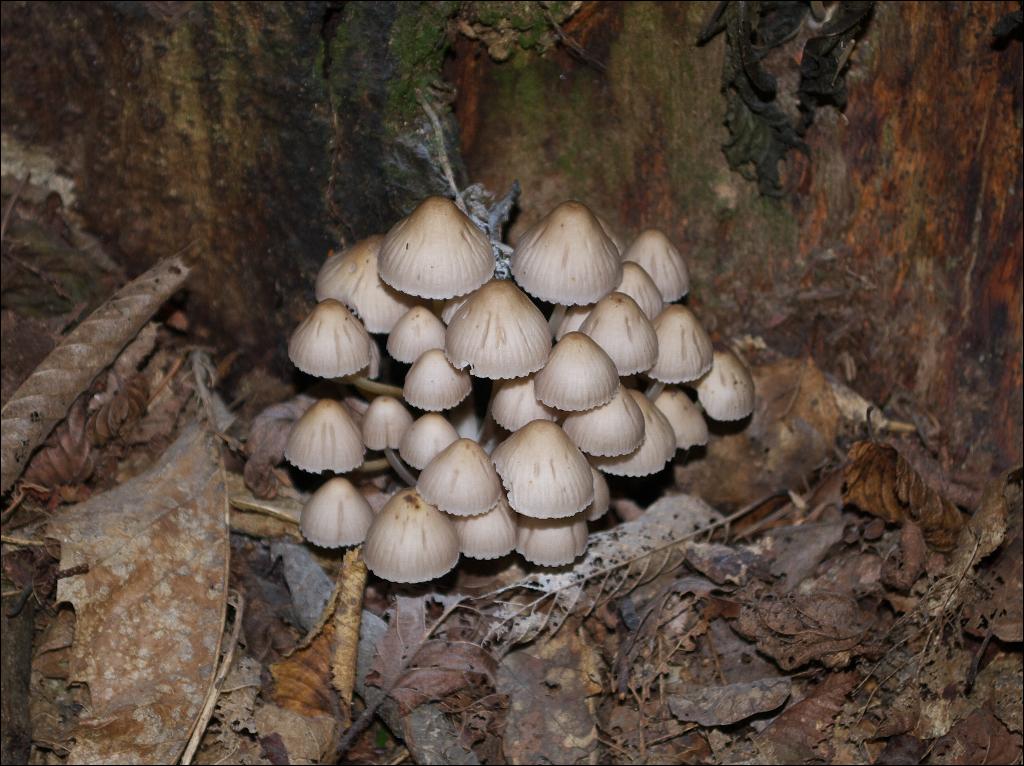
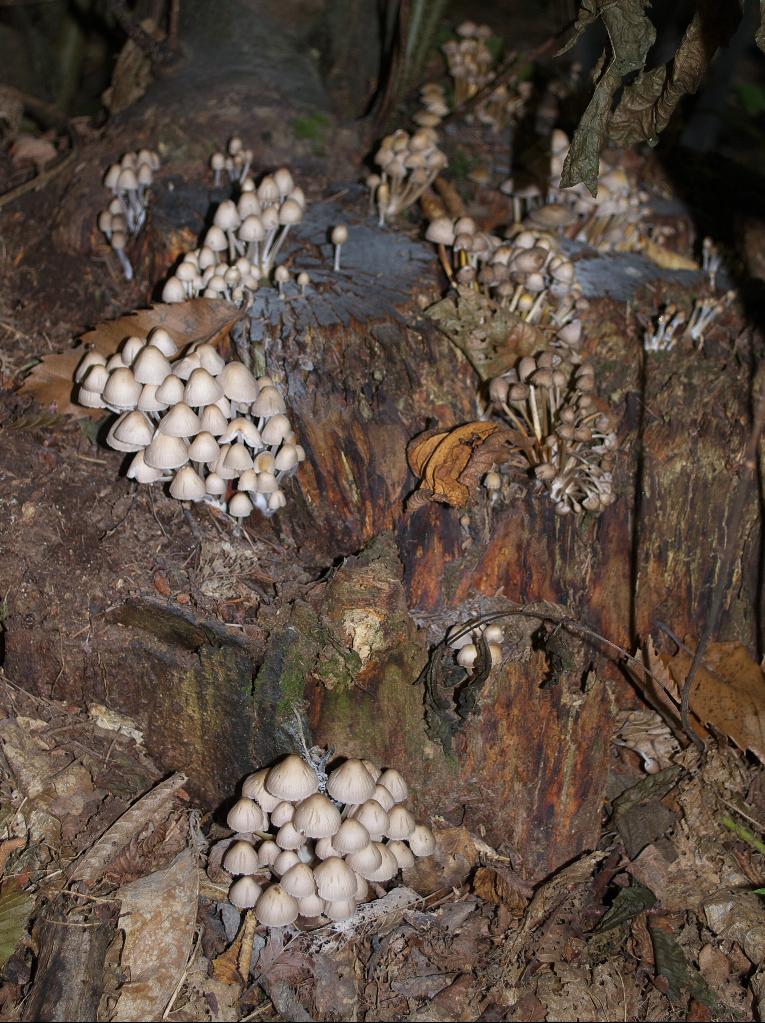 Here's another Mycena, but not sure which. The floppy stem helps identify it as a Mycena:
Here's another Mycena, but not sure which. The floppy stem helps identify it as a Mycena:
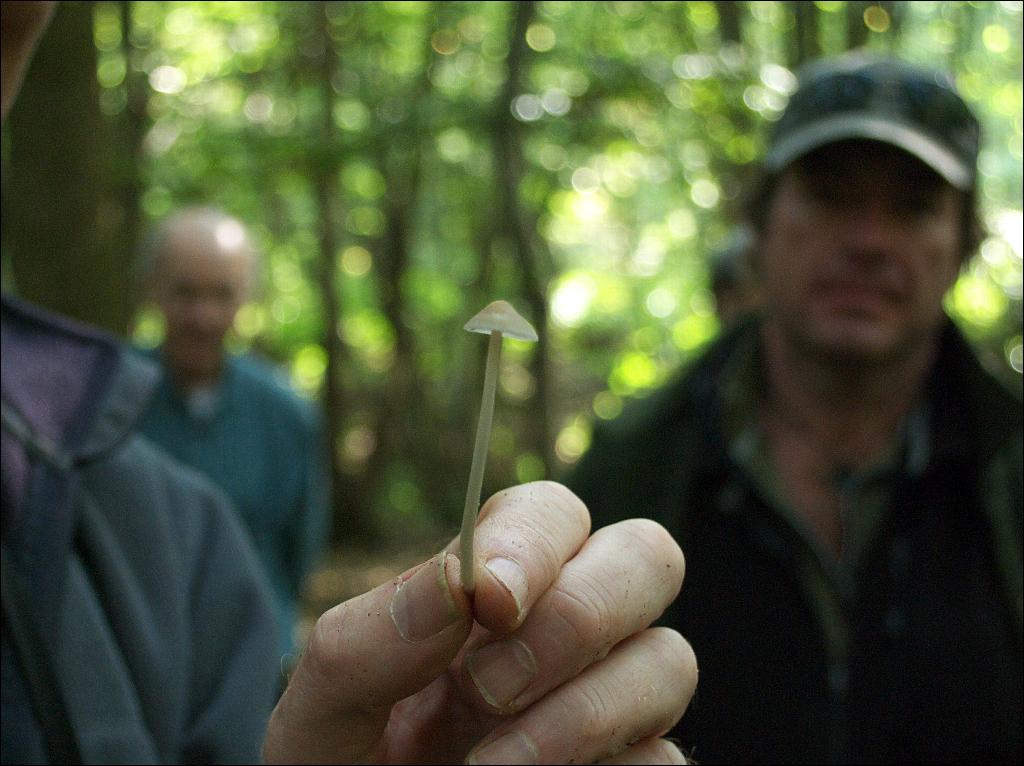
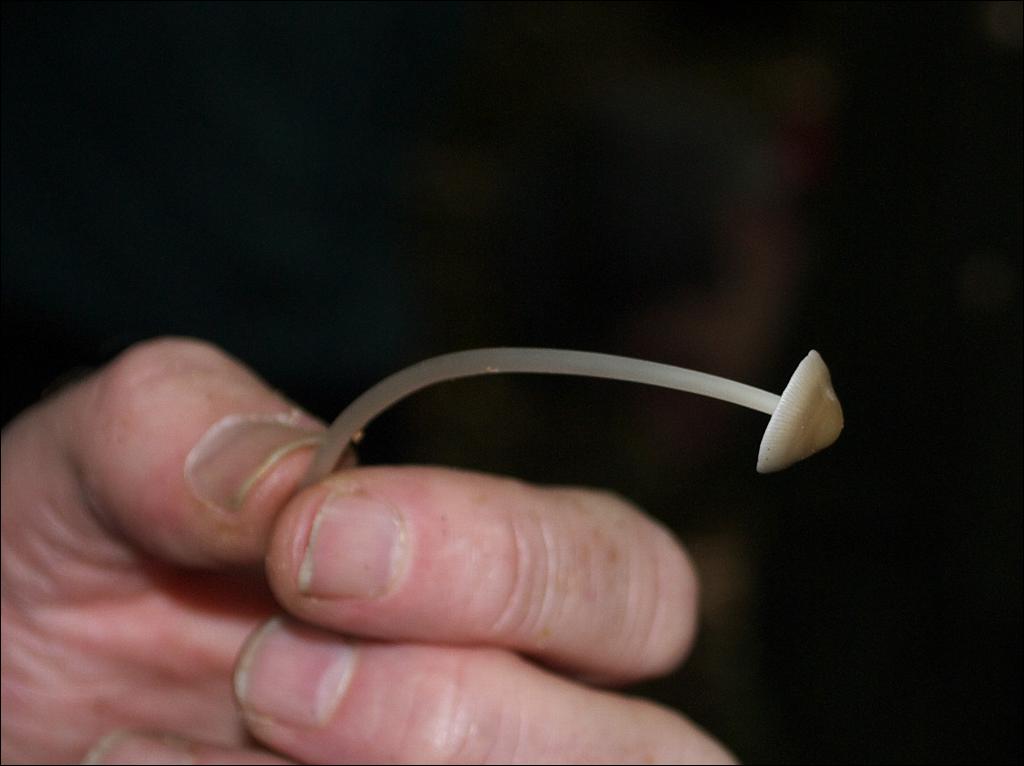 Another fungi whose stem helps idenitfy it is the Toughshank, which is strong and fibrous:
Another fungi whose stem helps idenitfy it is the Toughshank, which is strong and fibrous: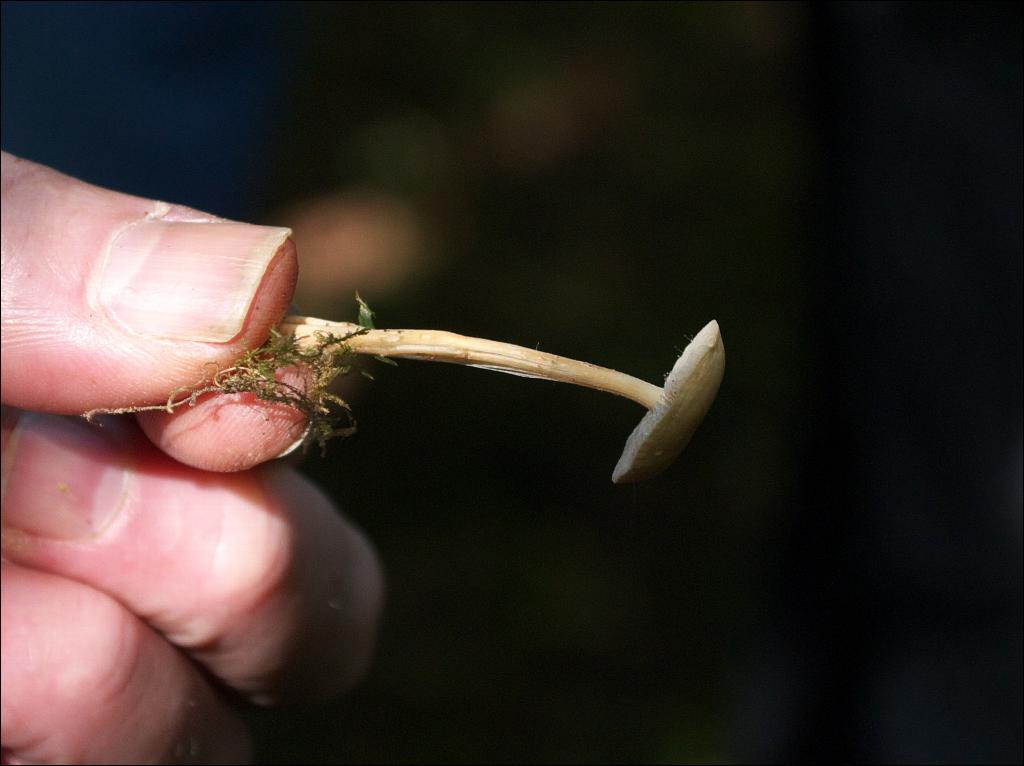
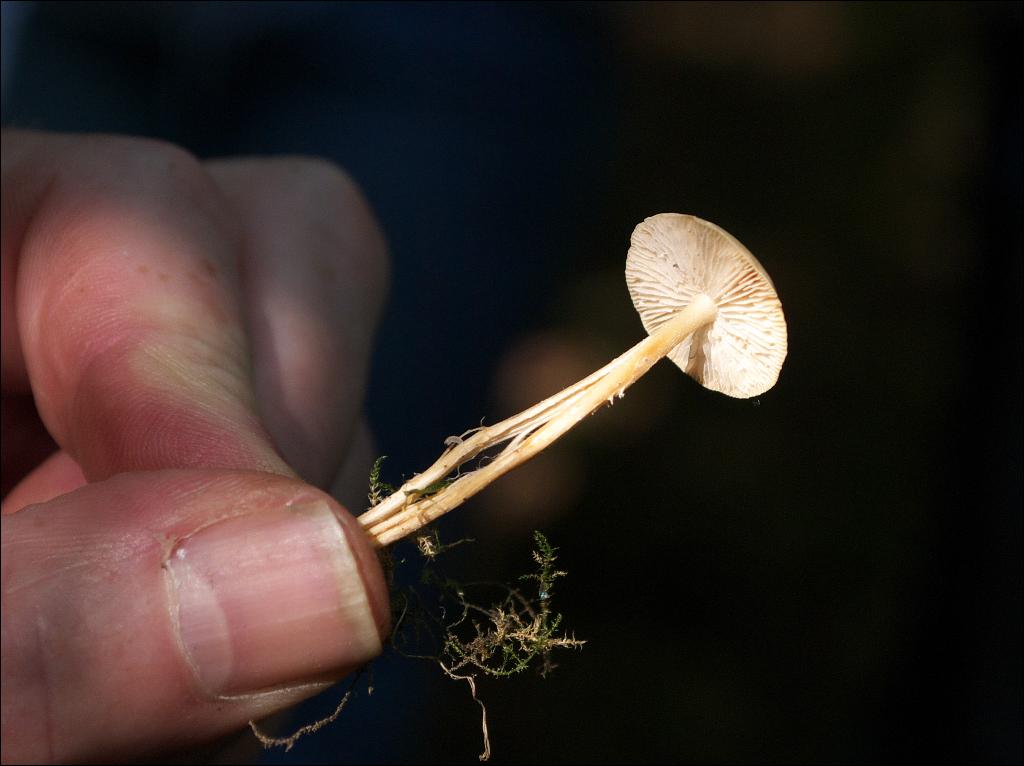 Now for some odds and ends. First, a Pluteus:
Now for some odds and ends. First, a Pluteus: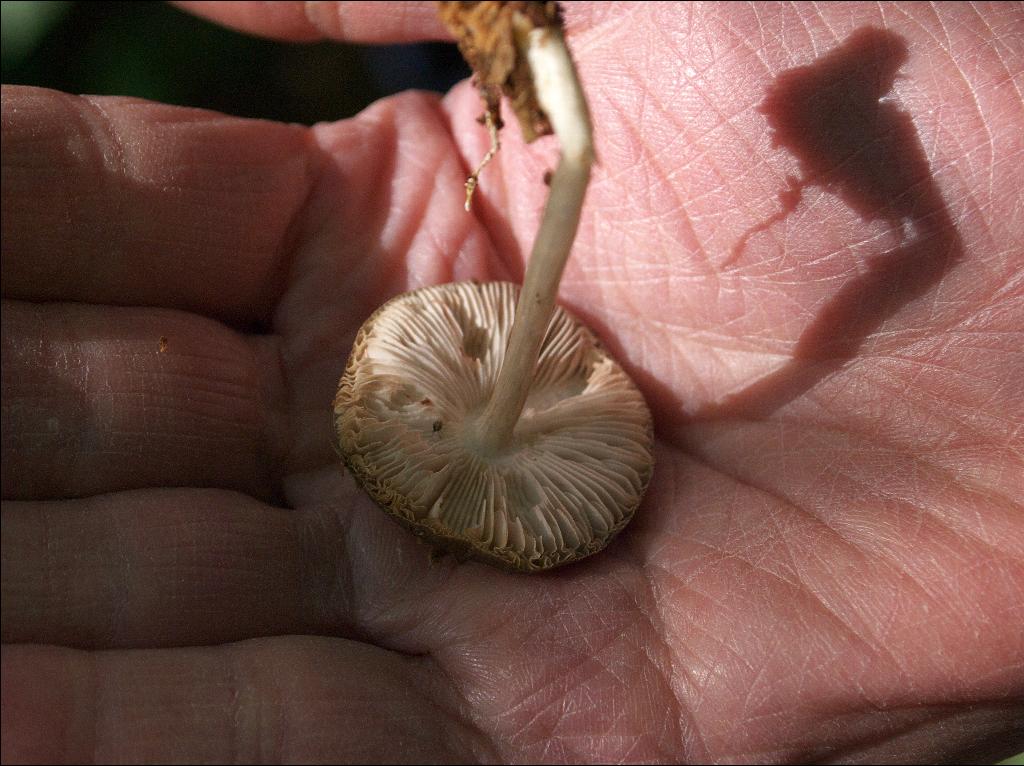
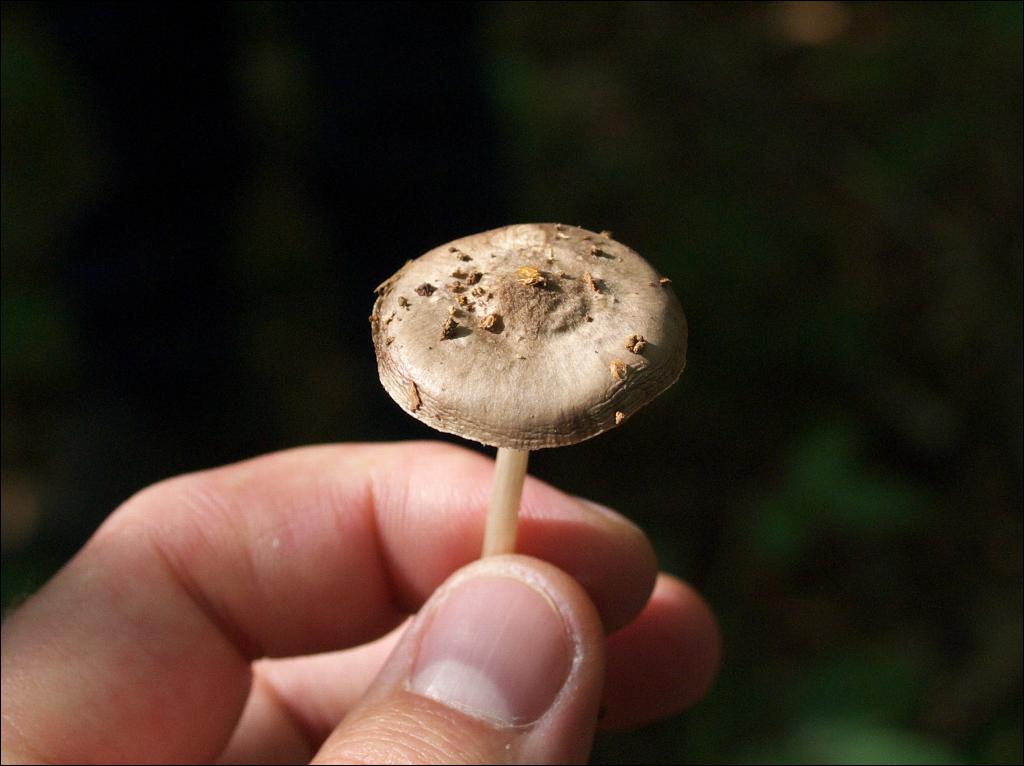 a Stag's Horn:
a Stag's Horn: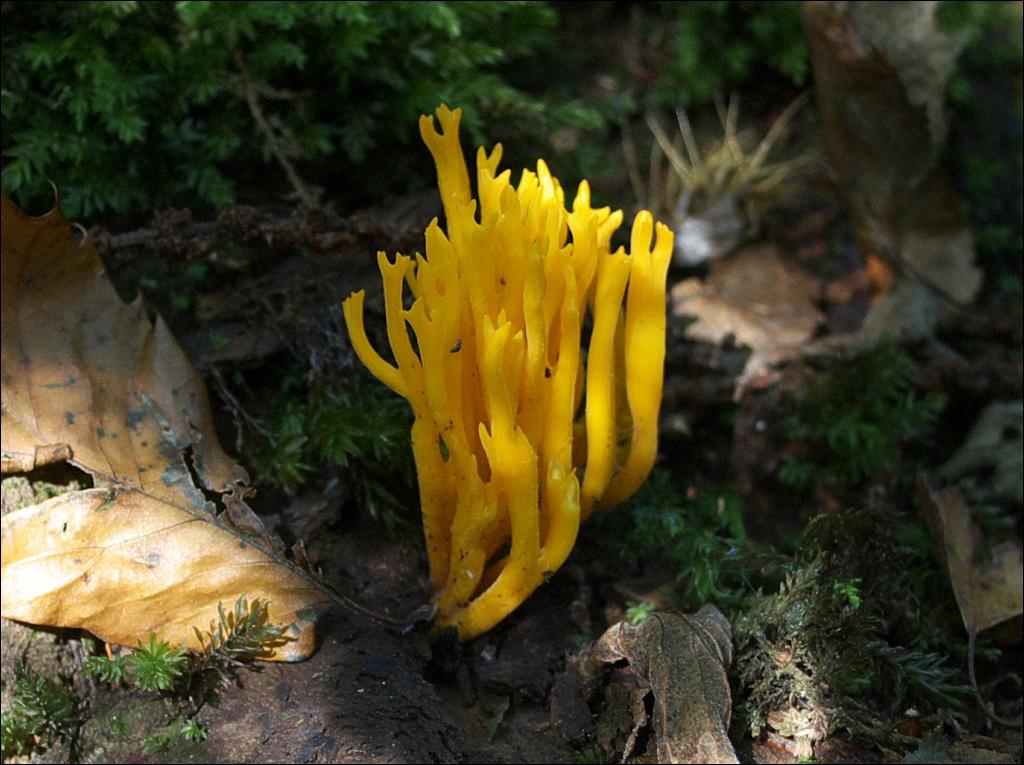
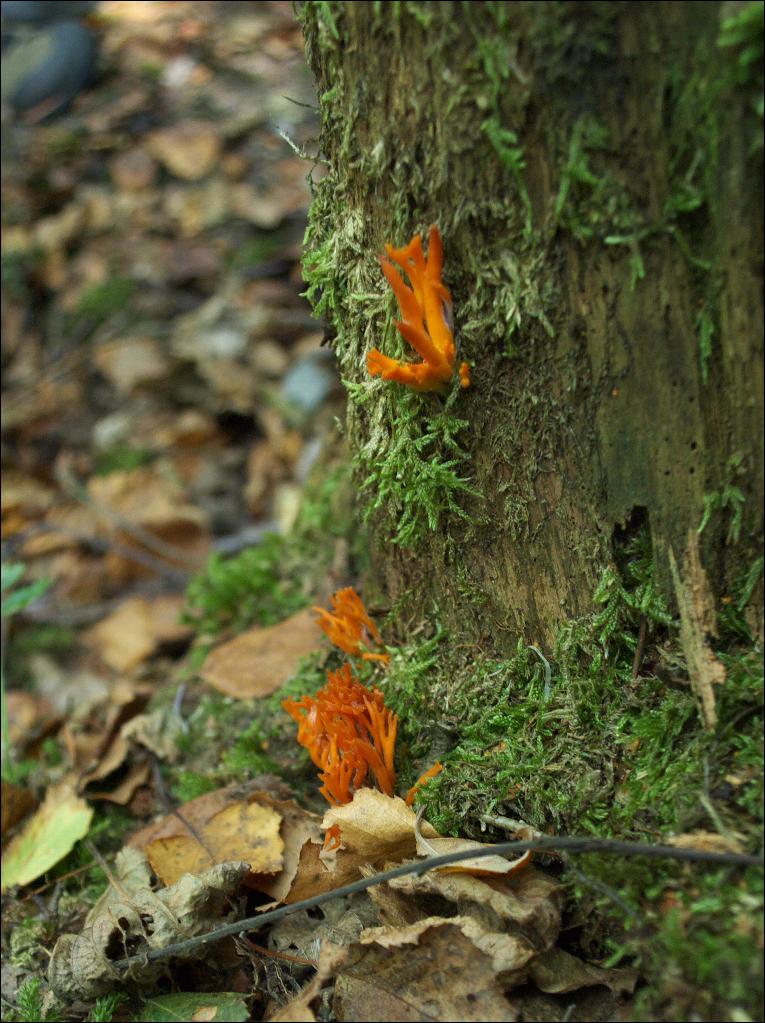 A Russula, or Brittlegill - no surprise that it has brittle gills, as can be seen in the photo:
A Russula, or Brittlegill - no surprise that it has brittle gills, as can be seen in the photo: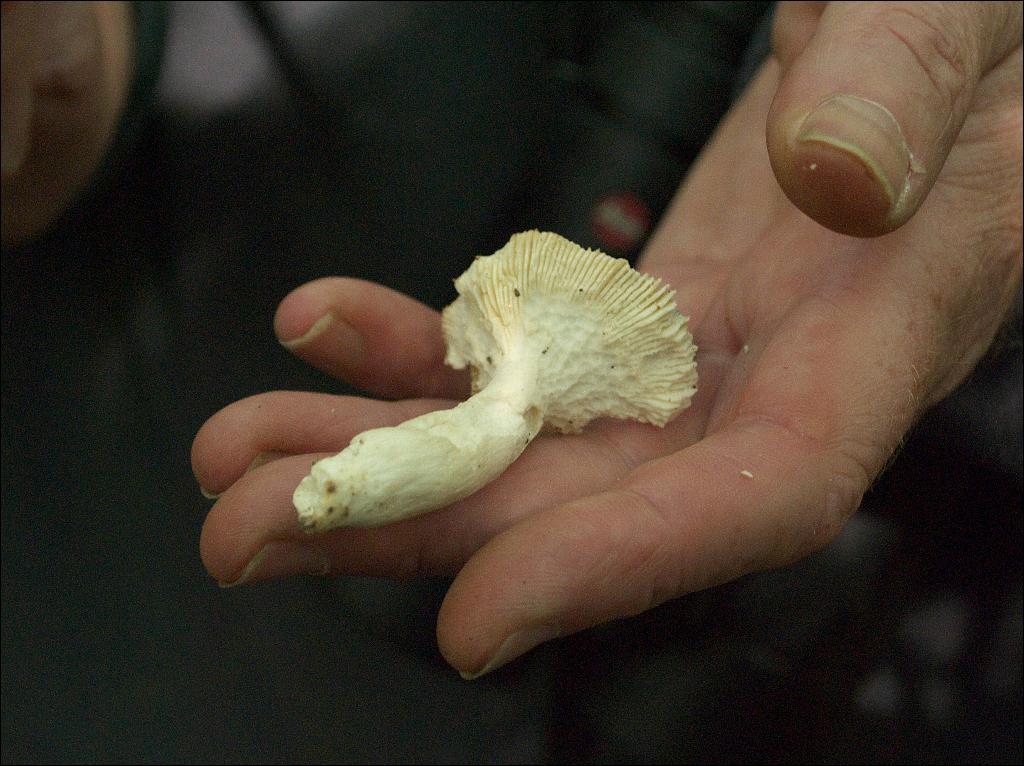 A Charcoal Burner (another Russula):
A Charcoal Burner (another Russula):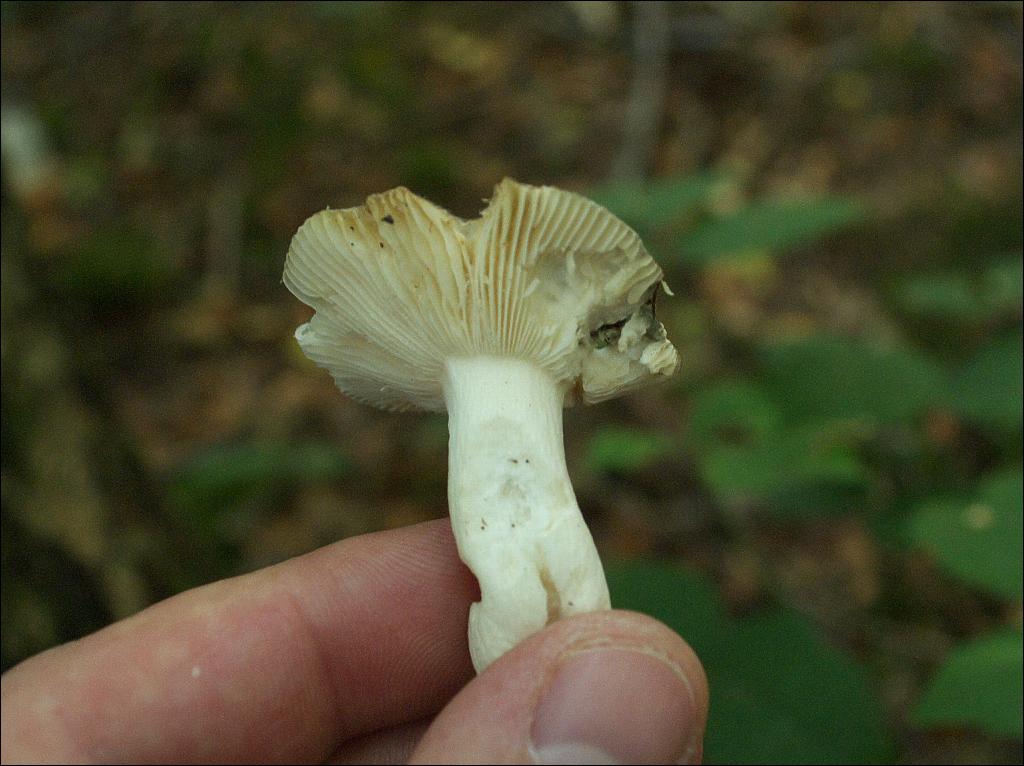
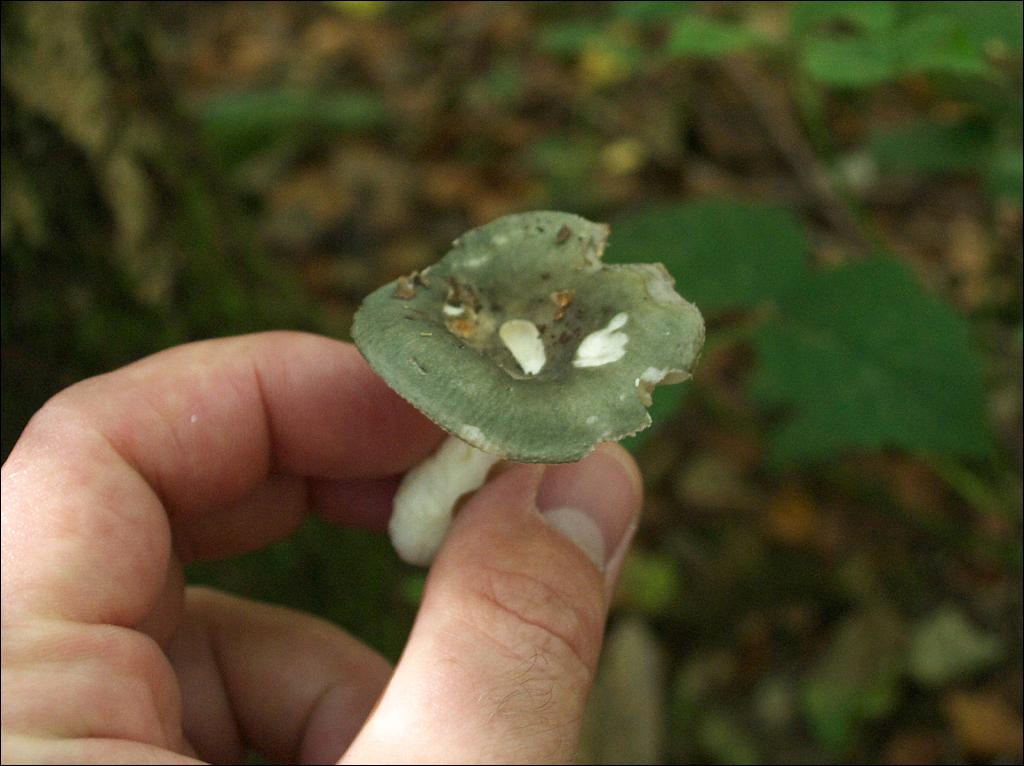 An Ochre Brittlegill (again a Russula):
An Ochre Brittlegill (again a Russula):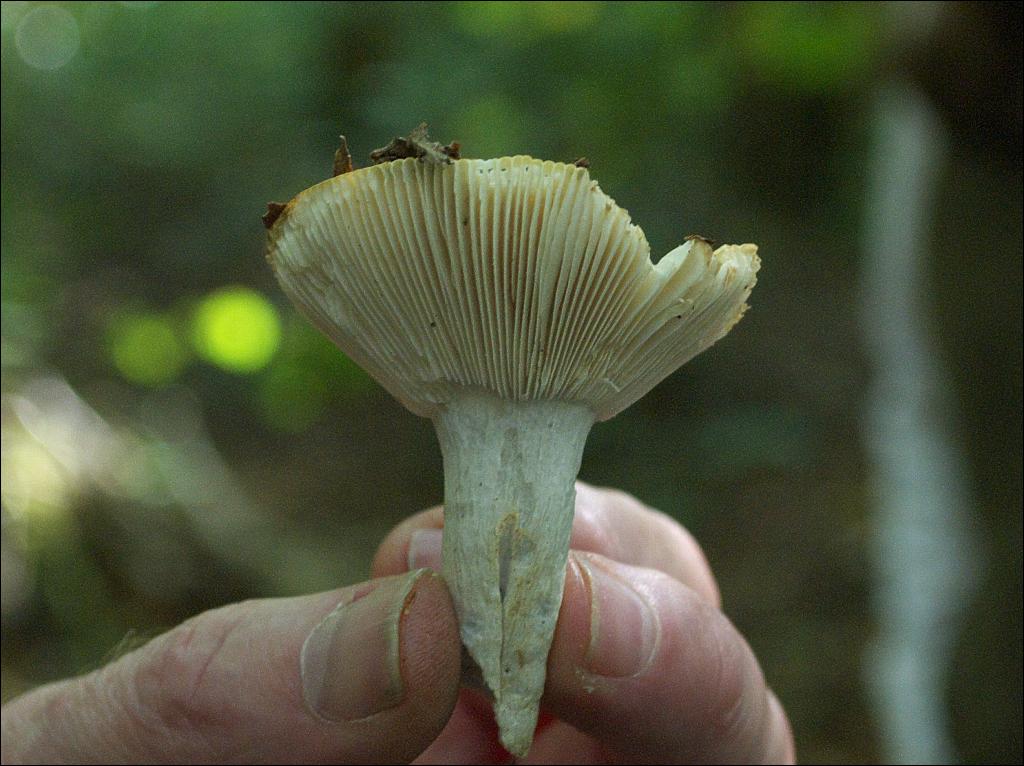
 A cluster of Sulphur Tuft:
A cluster of Sulphur Tuft:

 An Inocybe:
An Inocybe: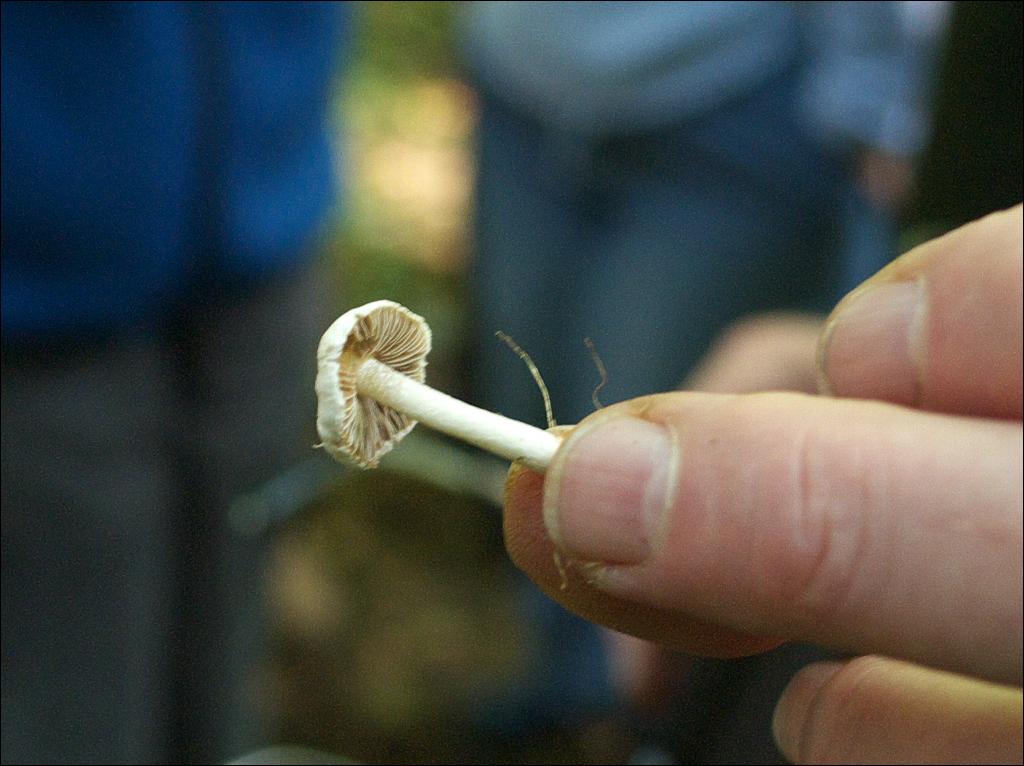
 Here's a poisonous one: the Brown Roll-rim. This used to be eaten widely, but it was eventually realised that after eating it several times it could provoke an immune response which causes the body's immune system to attack the red blood cells! Notice the variaiblity in appearance, and the clearly "rolled rim" on the larger specimen:
Here's a poisonous one: the Brown Roll-rim. This used to be eaten widely, but it was eventually realised that after eating it several times it could provoke an immune response which causes the body's immune system to attack the red blood cells! Notice the variaiblity in appearance, and the clearly "rolled rim" on the larger specimen:
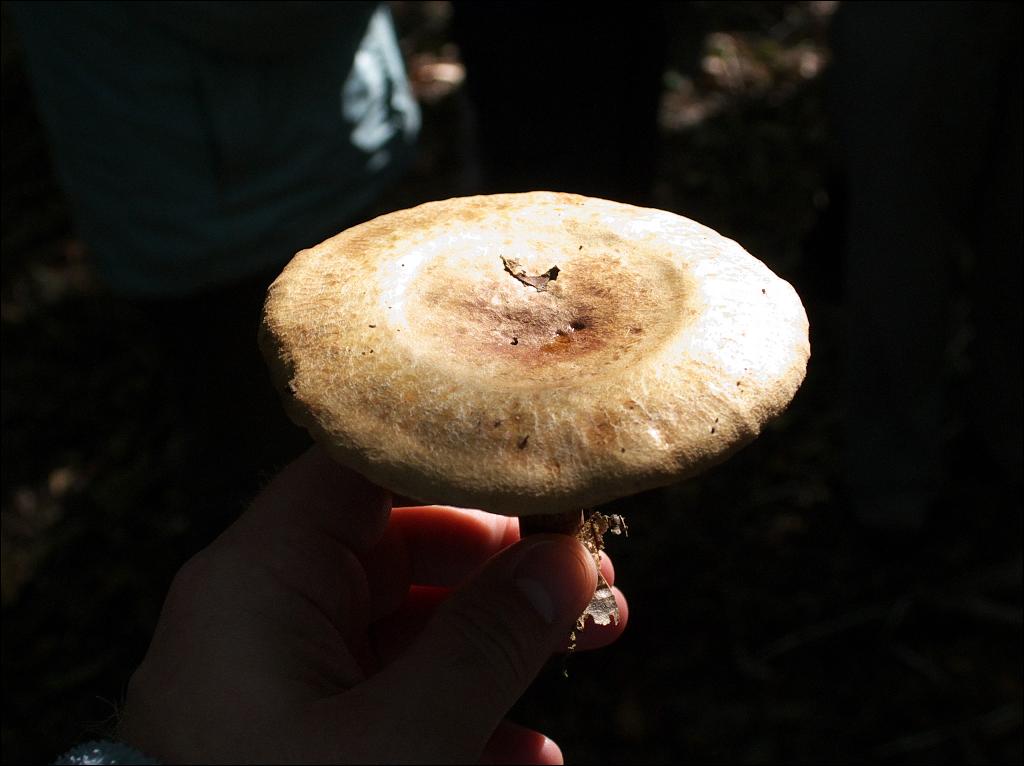
 And last but not least, the Lilac Fibrecap:
And last but not least, the Lilac Fibrecap: and Common Bonnet:
and Common Bonnet: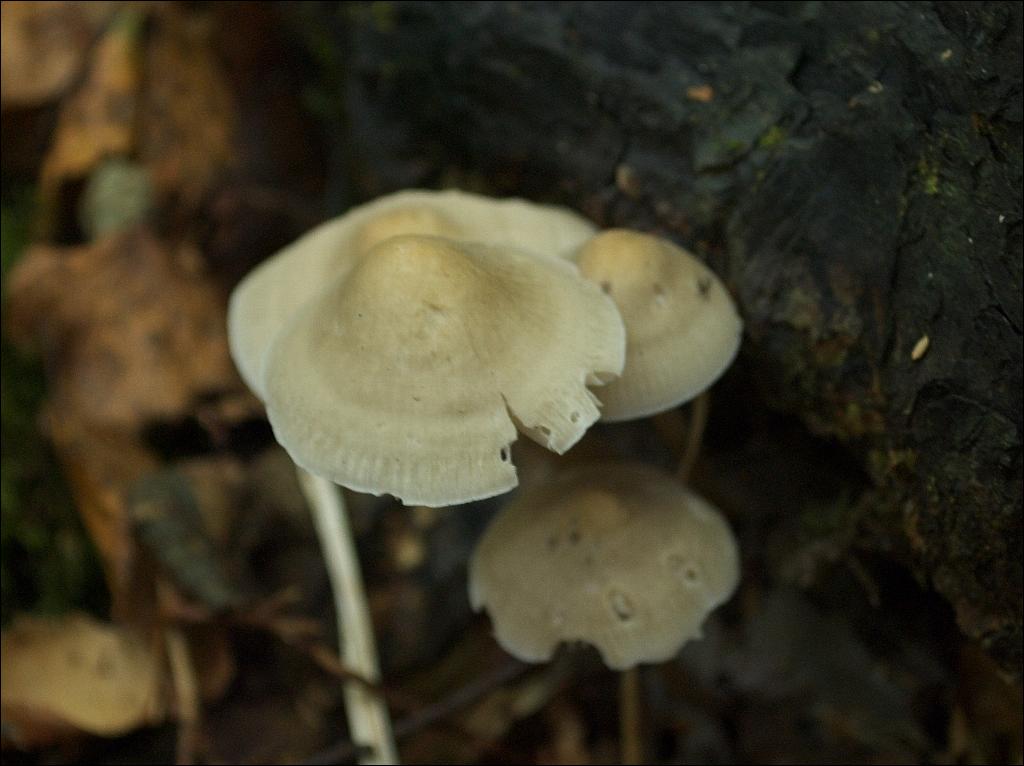 The walk took several hours, at a very slow pace as we kept stopping to look at the fungi.
The walk took several hours, at a very slow pace as we kept stopping to look at the fungi.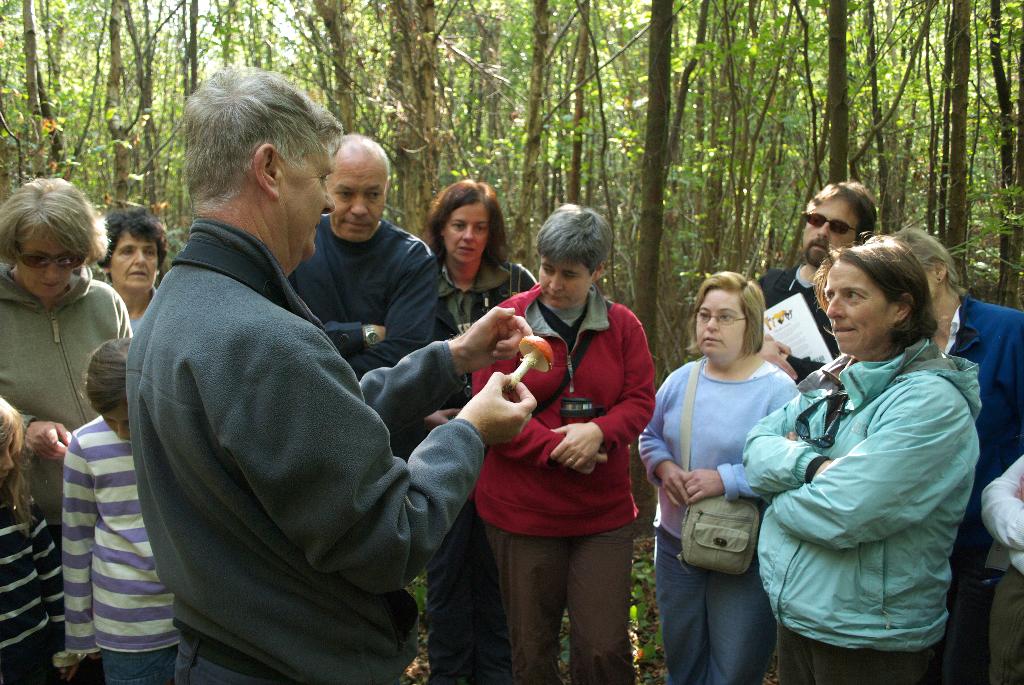
 When it was all done we had a picnic lunch in the sun and chatted until it was time to go.
When it was all done we had a picnic lunch in the sun and chatted until it was time to go.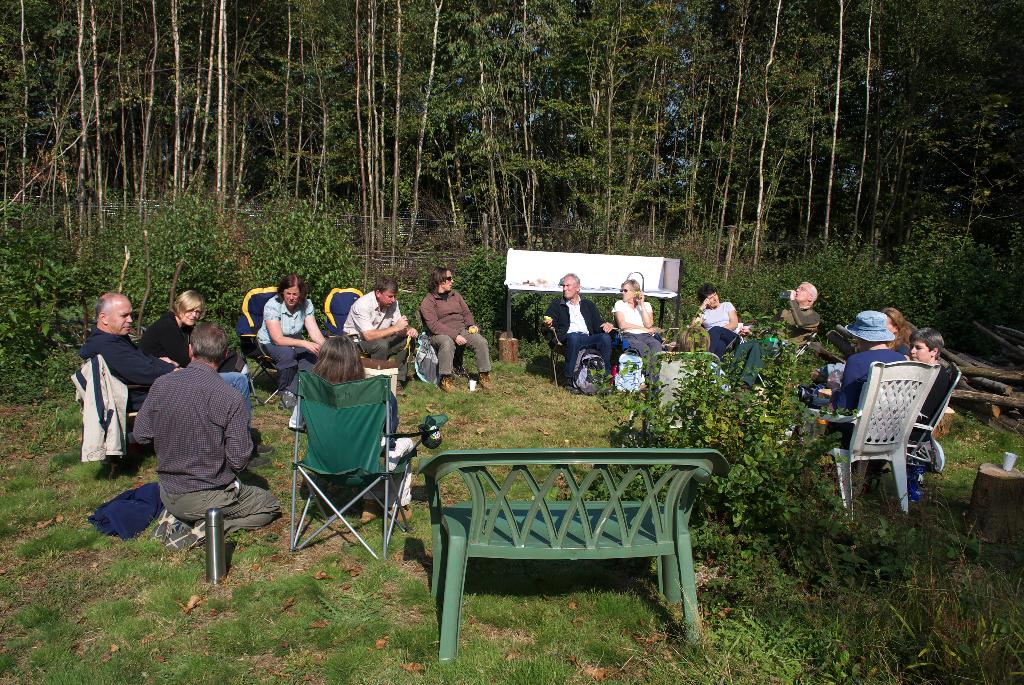 Mike
Mike
Saturday, 3 October 2009
Fungi ID walk
Subscribe to:
Post Comments (Atom)

1 comment:
Great Photos Tracy thanks!
Post a Comment